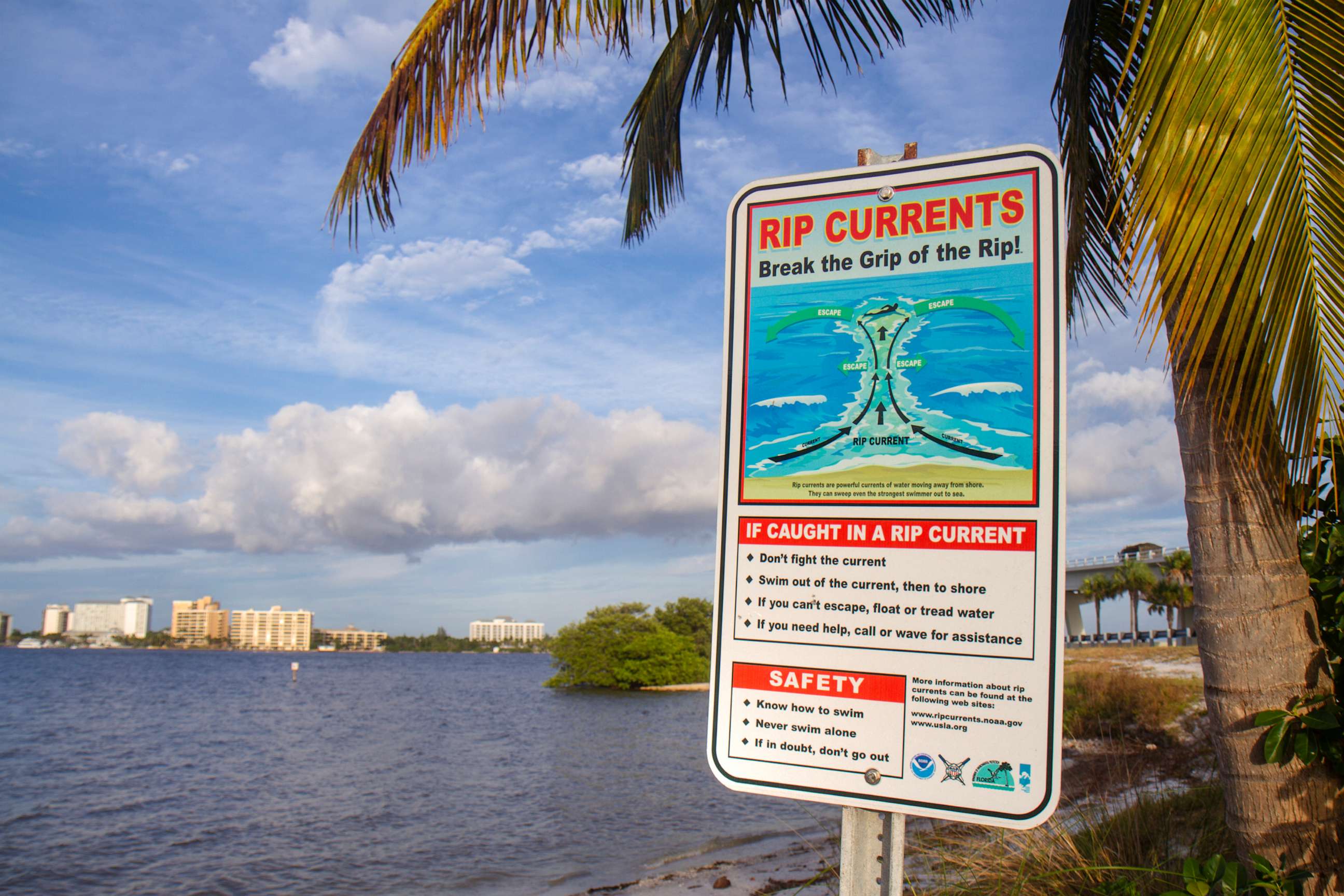Rip currents: What to know about the dangers and how to escape
Rip currents usually reach a speed of 1 to 2 feet per second.
If you're heading to the beach this summer, it's important to be aware of the dangers of rip currents.
Here's what you need to know about rip currents and how to stay safe:
A rip current, which flows out toward the ocean, can quickly pull a swimmer away from the shore.
Rip currents usually reach a speed of 1 to 2 feet per second, but some can clock in at 8 feet per second, which is faster than an Olympic swimmer, according to the National Oceanic and Atmospheric Administration.

If you're caught in a rip current, the first step is to flip to your back and float. Staying calm and not exhausting yourself by fighting against the current is essential to avoid drowning, NOAA said.
Next, you want to swim parallel to the sand until you escape the rip current, which is usually less than 80 feet wide, according to NOAA.

Experts advise looking up water conditions before heading to the beach and, if possible, swimming near a lifeguard.
Rip currents are often strongest at low tide, experts added.
According to the United States Lifesaving Association, you may be able to spot a rip current by looking for: a difference in water color; a line of foam or debris moving out to sea; or a narrow gap of darker, calm-looking water in between breaking waves.




